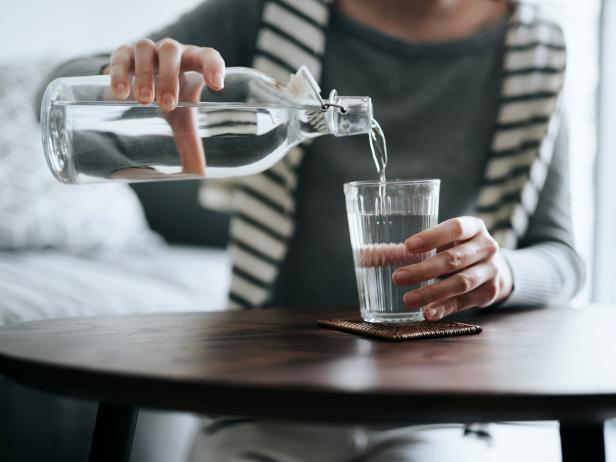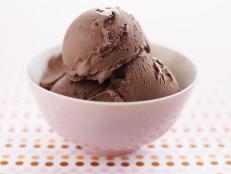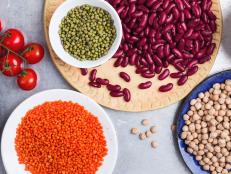What Is Distilled Water?
Yep, you can drink distilled water, but you’re better off saving it for other uses, like your clothing steamer.

d3sign/Getty Images
By Amy Gorin, MS, RDN for Food Network Kitchen.
Amy Gorin, MS, RDN, is a registered dietitian nutritionist and owner of Master the Media in Stamford, CT.
What is Distilled Water?
No doubt you’ve heard of distilled water. But what exactly is it? Is it safe to drink—and should you be drinking it?
“Distilled water is different from tap water,” says Elizabeth Barnes, MS, RDN, a non-diet dietitian in North Carolina. “Distilled water is purified to remove [contaminants] and minerals like sodium, magnesium, and calcium. This is done through a process called steam distillation.”
But wait a minute, aren’t minerals in water a good thing? They are for drinking water—those minerals contain important electrolytes, and mineral water can contain as much calcium as a glass of milk. But distilled water has many uses beyond the kitchen.
Having flashbacks to eighth-grade science class? “Steam distillation is a process of boiling water and collecting the steam that then condenses back into a liquid,” adds Barnes. “Distilled water only contains hydrogen and oxygen.”
Indeed, distillation removes more than 99.9 percent of the dissolved minerals in tap water, adds Grace Clark-Hibbs, MDA, RDN, owner of Nutrition with Grace in Portland, OR. “This process is a form of water purification.”

Jenny Dettrick/Getty Images
Can You Drink Distilled Water?
Distillation is used to make sea water drinkable and to remove contaminants from water, according to the U.S. Department of the Interior. So yes, distilled water is drinkable. “Overall, drinking distilled water is safe and healthy as part of a balanced diet,” says Clark-Hibbs. “The distillation process eliminates harmful pathogens, making it a good source of hydration in areas that otherwise lack clean drinking water.”
But let’s talk about those minerals in water. In water that comes from the earth—mineral and spring water—you will find naturally occurring electrolytes that help your body function. These include sodium and magnesium. “The primary health concern with drinking distilled water is that it's free of almost 100 percent of the essential minerals naturally found in fresh water,” says Clark-Hibbs. “These minerals are required for maintaining a proper electrolyte balance within the body. That being said, if distilled water is consumed alongside a variety of foods, including fruits and vegetables, you should be able to get enough minerals from your food.” So while you can drink distilled water, it’s not ideal to do so.
Distillation is just one of many forms of water purification—others include reverse-osmosis, filtration, and chlorination. “Purified water is mechanically processed to remove impurities,” says Barnes. “After the water is purified, minerals may be added back for flavor.”
This is why many people don’t much like the taste of distilled water. “People often find that distilled water doesn't have a great taste,” notes Barnes. “Minerals are what give your water flavor, so no minerals mean bland water.”
Now, what about mineral water? “Mineral water has a naturally high mineral content because it comes from natural springs and underground reservoirs,” says Clark-Hibbs. “It is bottled at the source and must contain at least 250 parts per million of total dissolved solids, as set by the Food and Drug Administration (FDA).”
What is Distilled Water Used For?
While distilled water is drinkable, most common uses for distilled water have nothing to do with hydration.
Distilled water is often used in irons and clothing steamers. According to Consumer Reports, doing so isn’t absolutely necessary—although using at least half distilled water is recommended if you have hard water. However, using non-distilled water in these appliances can void the warranty.
Distilled water is also used in medical practices to prepare food for patients and for sterilization—and is commonly used in devices such as nasal irrigation systems. In such an instance, the FDA notes that untreated tap water is not safe for nasal rinsing—as it may contain bacteria, amoebas, or other organisms that can cause serious infection.
Other uses include car maintenance (such as for placing inside of a car battery or a cooling system) and cosmetics, where it can be incorporated as an ingredient.
How Do I Make Distilled Water?
You can pick up a bottle of distilled water at most grocery stores. Or you can distill your own water. Here’s how to do it.
- Place 8 cups of water in a large pot on the stovetop. Then, place a smaller pot inside the large pot. It’s important that no surrounding water gets into the smaller pot.
- Bring the water to a boil—and then lower to a simmer.
- Cover the large pot with an upside-down lid so that the top of the lid veers downward and the lid’s underside creates a shallow bowl at the top.
- Fill the upside-down lid with ice.
- The distilled water will begin to collect in the smaller pot. Be patient with this process, as producing a cup of distilled water may take up to an hour.
- Use the distilled water right away, if possible, or store it in a clean, sealed glass container.
Related Links:


























































